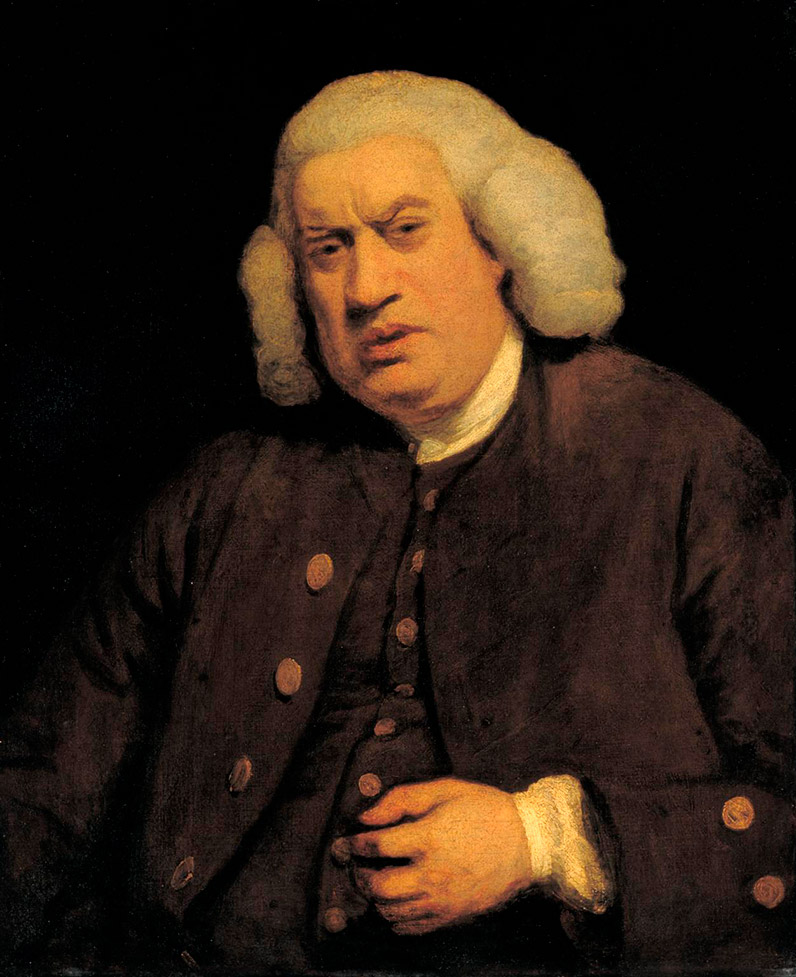Key People
Samuel Johnson (1709-1784)
Samuel Johnson was an author and lexicographer, or dictionary compiler, born in Lichfield in Staffordshire. He is best known for his ‘Dictionary of the English language’ (1755). It became the standard text on the English language soon after its publication, and Johnson came to be regarded as a leading authority on the English language. He became popularly known by the nickname ‘Dictionary Johnson’.
Scottish journey with James Boswell
In 1773, Johnson made a journey around Scotland with his friend and biographer James Boswell, an Edinburgh advocate. Starting from Edinburgh, they travelled up the east coast to Inverness via St Andrews and Aberdeen, then to Skye, Iona, Mull and Glasgow, before returning to Edinburgh.
Both travellers produced accounts of their journey. James Boswell wrote the ‘Journal of a Tour to the Hebrides’ (1785) and Johnson ‘A journey to the Western Isles of Scotland’ (1775).
Questioned Ossian authenticity
Johnson was critical of the Ossian poems edited by James Macpherson. Johnson questioned whether the poems were authentic. He did not believe that they were translations of ancient Gaelic pieces as Macpherson claimed, and suggested that Macpherson might have composed them himself.
Image: ‘Samuel Johnson’, after John Opie, 1783-1784. By courtesy of the National Portrait Gallery.
